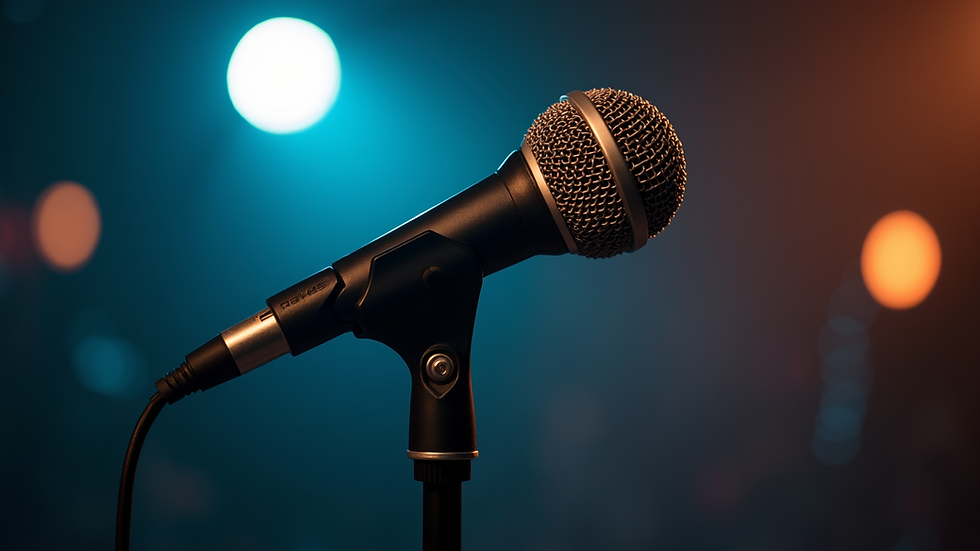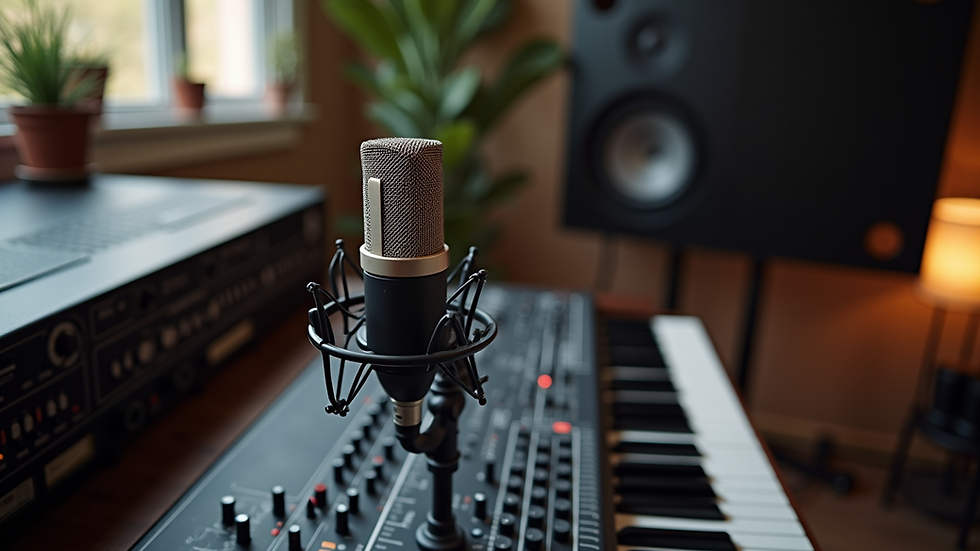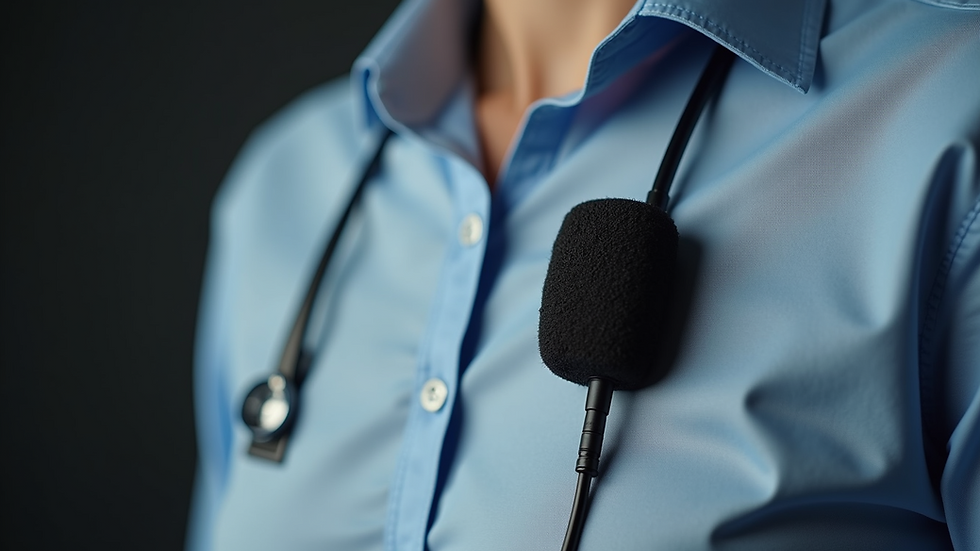Exploring Various Microphone Types and Their Applications in the Recording Process
- Scott Hannon
- May 24
- 4 min read
Microphones are vital tools in the world of sound, whether for music, film, or podcasts. They capture audio and translate it into a format that can be recorded and shared. By understanding the different types of microphones and how they can enhance your projects, you can make better choices about what to use. In this post, we will examine various microphone types, their specific applications, and provide concrete examples that will help you choose the right equipment for your needs.
Dynamic Microphones
Dynamic microphones are known for their strength and versatility. They work through a diaphragm attached to a coil of wire in a magnetic field. When sound waves hit the diaphragm, it vibrates, creating an electric current that converts sound into an audio signal.
These microphones excel at handling high sound pressure levels, making them perfect for live performances. They capture louder sound sources such as electric guitars, drums, and vocal performances without significant distortion.
Examples include the Shure SM58, a staple in many live settings, known for its ruggedness and reliability. Additionally, the Shure SM57 is lauded for its ability to capture instruments and vocals effectively, making it a favorite in both live and studio scenarios. In fact, according to industry surveys, over 80% of live sound engineers prefer using dynamic microphones for their resilience.

Condenser Microphones
Condenser microphones are highly sensitive and capable of capturing a wide frequency range. They work by using a thin diaphragm placed near a backplate to form a capacitor, generating voltage when sound waves hit the diaphragm.
These microphones are often used for capturing vocals, acoustic instruments, and even overhead miking for drum kits because of their clarity and ability to pick up subtle sound details. Condenser microphones typically require external power, either from batteries or phantom power from audio interfaces.
Some popular models include the Audio-Technica AT2020 and the Neumann U87. The U87, for instance, is favored in professional studios for its rich sound quality and versatility. It is often reported that recordings made with high-end condensers can be 30% clearer compared to lower-end options.

Ribbon Microphones
Ribbon microphones present a distinctive design and audio characteristic. They use a thin metal ribbon suspended in a magnetic field that vibrates in response to sound waves. This design results in a warm, natural sound quality.
Although less commonly used than dynamic or condenser microphones, ribbon microphones shine when it comes to capturing brass instruments, strings, and specific vocal types. Their vintage sound is particularly appreciated in studio settings for a rich audio texture.
Notable ribbon microphones include the Royer R-121 and the AEA R84. The quality of sound captured by these microphones is frequently highlighted; in blind tests, listeners have preferred the sound of ribbon microphones over others 65% of the time for certain types of music.
Lavalier Microphones
Lavalier microphones, or lapel mics, are compact and can be clipped to clothing for hands-free audio recording. They are commonly used in interviews, presentations, and film production.
These microphones can be dynamic or condenser, depending on their intended use. Often designed to connect wirelessly to a transmitter, they allow for freedom of movement while producing clear audio. Their size and nearness to the speaker make them excellent for capturing dialogue clearly.
Models like the Sennheiser EW 112P and the Rode SmartLav+ are popular for their reliability and sound quality. In recent years, the use of lavalier microphones in video production has surged, accounting for about 30% of the total microphone market for film and broadcasting.

Shotgun Microphones
Shotgun microphones are highly directional, capturing sound from a specific source while rejecting noise from the sides and back. Their unique shape allows them to focus on sound within a narrow angle, making them ideal for film and television production.
These microphones are often used on boom poles or mounted on cameras, making it easier to record clean sound from a distance. They excel in capturing dialogue, which is crucial in film production where clear audio is essential.
Popular models include the Rode NTG3 and the Sennheiser MKH 416. Many sound professionals report that using a shotgun microphone can improve dialogue clarity by over 40% in controlled environments.
USB Microphones
USB microphones have gained popularity due to their ease of use. These microphones connect directly to a computer via USB, making them perfect for home studios, podcasting, and streamers.
While they might not always match the quality of professional XLR microphones, they simplify the recording process. This convenience appeals to beginners and semi-professional creators alike.
Noteworthy examples include the Blue Yeti, well-regarded for its sound quality and versatility, and the Audio-Technica ATR2100x, which offers both USB and XLR outputs. Over recent years, USB microphone sales have surged by 150% as more people explore podcasting and home recording.
Key Takeaways
Understanding the different types of microphones and their specific uses is essential for anyone involved in the recording process. Whether opting for dynamic microphones for their rough-and-tumble nature, condenser microphones for their remarkable clarity, or lavalier microphones for understated audio capture, making the right choice can greatly impact sound quality.
By selecting the appropriate microphone for your recording needs, you can enrich your audio projects. With this information, audio enthusiasts can confidently approach their next endeavor and make informed decisions regarding microphone selection. Happy recording!
Comments